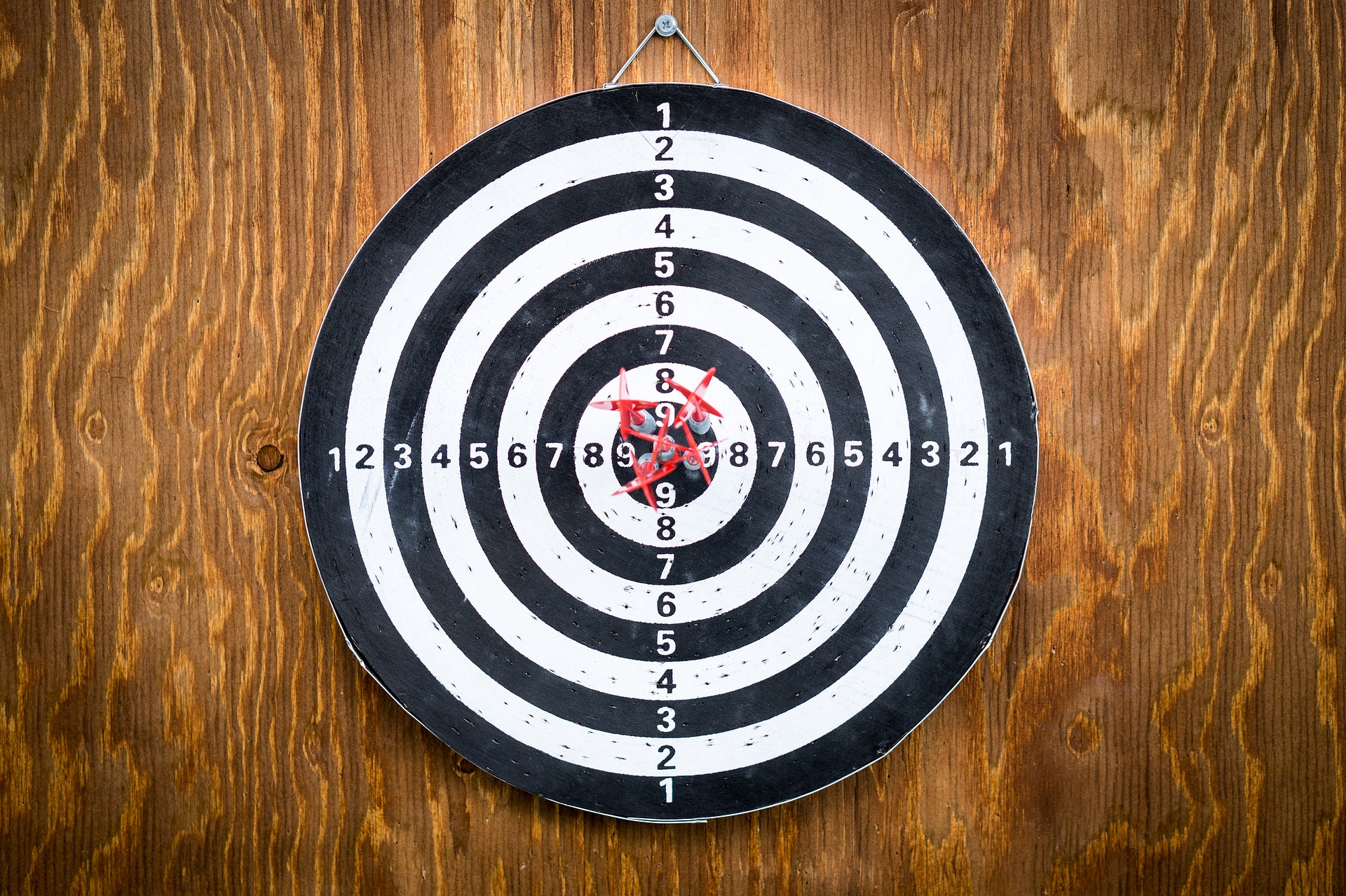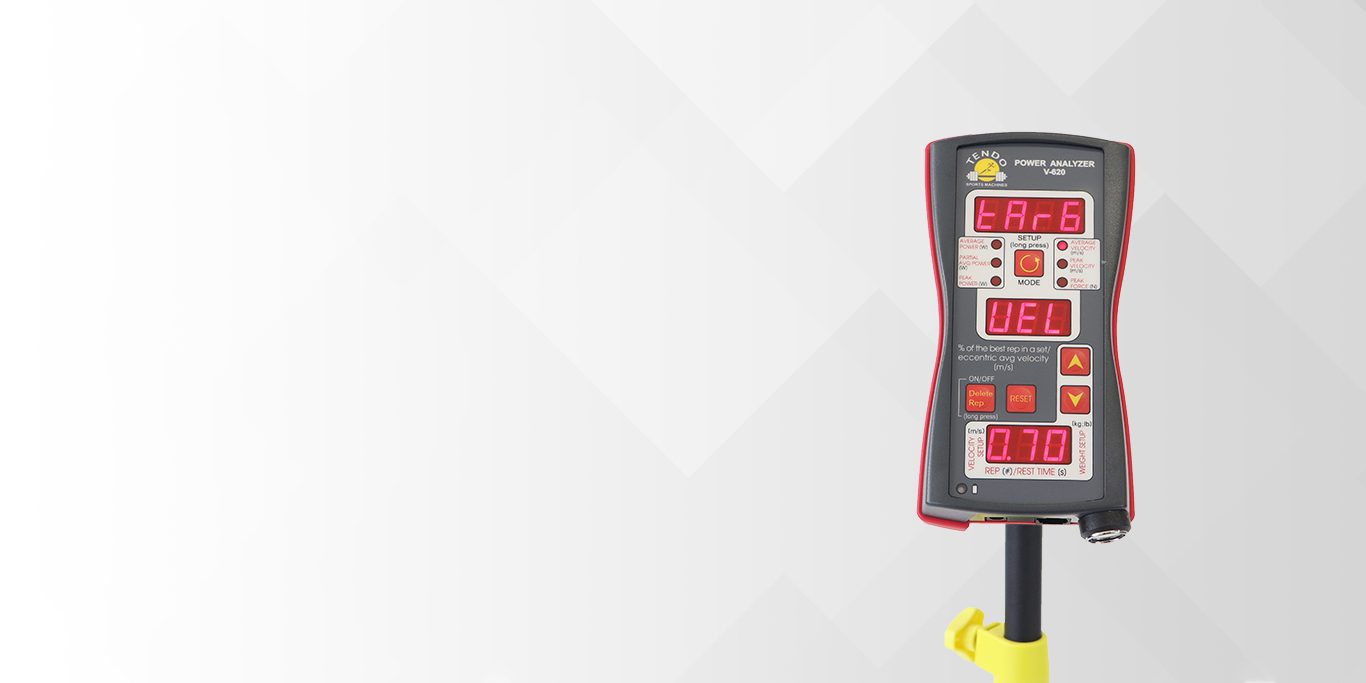We made extra precautions to keep your data even more reliable.
Tendo Unit is the only device to eliminate confounding variables caused by undesirable attempts of athletes to maximise their results (e.g. being fast only at the end of the movement which will produce better average and peak values but does not represent a better performance) by setting a % range for peak force and partial average power measurements.
We made extra precautions to keep your data even more reliable.
Tendo Unit is the only device to eliminate confounding variables caused by undesirable attempts of athletes to maximise their results (e.g. being fast only at the end of the movement which will produce better average and peak values but does not represent a better performance) by setting a % range for peak force and partial average power measurements.
Why should you adjust % Range for Peak Force measurement?
In some exercises, there can be two positions for Peak Force. One at the beginning of the movement and another at the end. To filter out the undesirable peak at the end of the movement, shorten the range of the measurement of Peak Force.
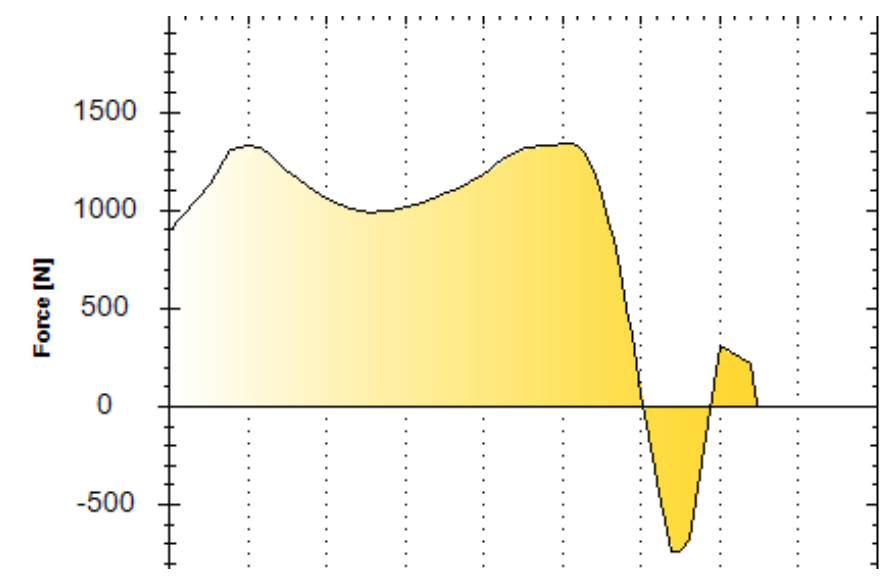
Force x Time graph for back squat
Why should you adjust % Range for Peak Force measurement?
In some exercises, there can be two positions for Peak Force. One at the beginning of the movement and another at the end. To filter out the undesirable peak at the end of the movement, shorten the range of the measurement of Peak Force.



Force x Time graph for back squat
Why should you measure Partial Average Power?
Sometimes average or peak power is not sufficient parameters for assessment of athletes’ qualities in weight training. Many athletes in an effort to reach maximum power value try to accelerate at the end of the movement. This way, athletes reach high average and peak power values, but those parameters are misrepresenting the actual results. Said, being fast at the end of a movement is too late. These athletes do have high average and peak power values but with a low rate of force development. The rate of force development is a crucial factor in sports performance where explosiveness is required. The partial average power will help you to emphasise the rate of force development in your training and ensures the development of explosive power.
Example – Back Squat measured on waist
| Ice Hockey Player | Olympic Weightlifter | |
|---|---|---|
| Body Weight | 100kg | 100kg |
| Vertical Jump Height | 50cm | 56cm |
| 1Rm Back Squat | 160kg | 230kg |
| Average Power | 954W | 975W |
| Peak Power | 2316W | 1579W |
| Partial Average Power (40%) | 803W | 1073W |
| Peak Force up to 0.25 | 1320N/0.15 | 1574N/0.115 |
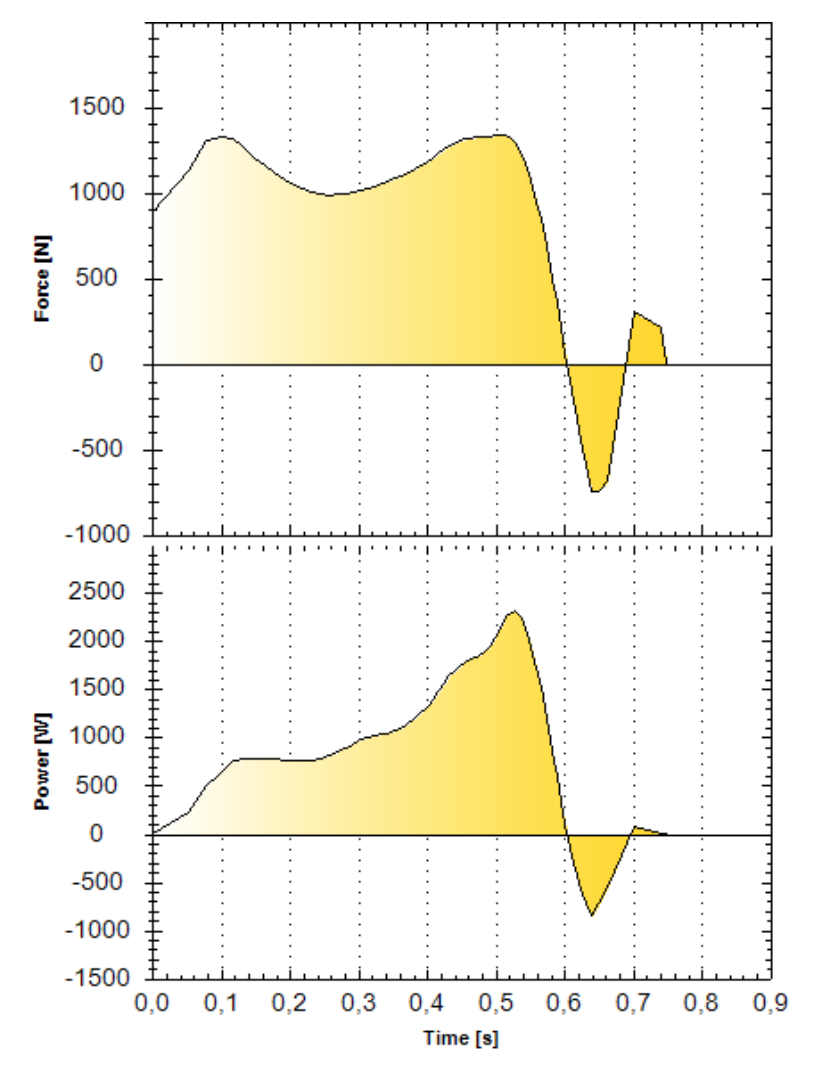


Ice Hockey player
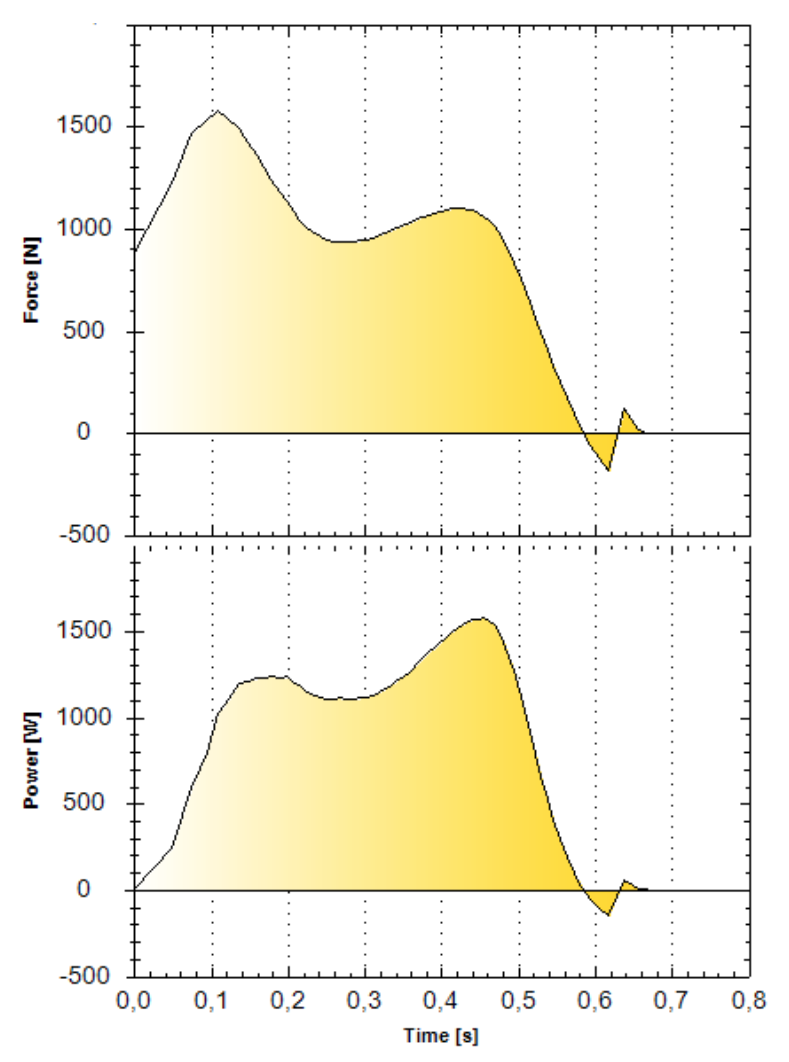


Olympic Weightlifter
Why should you measure Partial Average Power?
Sometimes average or peak power is not sufficient parameters for assessment of athletes’ qualities in weight training. Many athletes in an effort to reach maximum power value try to accelerate at the end of the movement. This way, athletes reach high average and peak power values, but those parameters are misrepresenting the actual results. Said, being fast at the end of a movement is too late. These athletes do have high average and peak power values but with a low rate of force development. The rate of force development is a crucial factor in sports performance where explosiveness is required. The partial average power will help you to emphasise the rate of force development in your training and ensures the development of explosive power.
Example – Back Squat measured on waist
| Ice Hockey Player | Olympic Weightlifter | |
|---|---|---|
| Body Weight | 100kg | 100kg |
| Vertical Jump Height | 50cm | 56cm |
| 1Rm Back Squat | 160kg | 230kg |
| Average Power | 954W | 975W |
| Peak Power | 2316W | 1579W |
| Partial Average Power (40%) | 803W | 1073W |
| Peak Force up to 0.25 | 1320N/0.15 | 1574N/0.115 |



Ice Hockey player



Olympic Weightlifter

